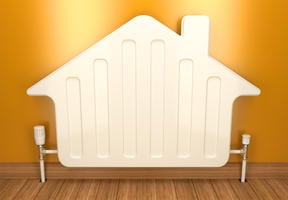Housing: The User's Crucial Role
10 min read
Improving a building’s can be achieved both through passive methods that enhance its intrinsic features, particularly at the time of design and construction, and active methods that depend on the user and how they manage their consumption. Passive measures take time, require a holistic approach and can be more expensive. Active measures are less costly (or, indeed, cost-free), and deliver immediate gains.

© THINKSTOCK - The user's behavior is key to managing electricity and heat flows in the home.
Active Methods: Focus on the User
The originality of active measures is that the building's occupant is directly involved.1 This crucial role depends on three core elements:
- Measuring consumption. The “smart” and gas meters being phased in in many countries can accurately identify different sources of consumption such as heating, hot water, air conditioning, lighting, and other household appliances. They enable electricity companies to fine-tune their plans and will make it easier to manage new usages, such as the integration of locally generated solar , and electric car charging. In France, these include Linky electricity meters and Gazpar gas meters.
- Regulating and programming. Regulating heating serves to maintain room temperature at a desired level, while programming controls heating with the aid of increasingly sophisticated sensors and control panel tablets.
- Changing user behavior. Accepting to live with a degree less of indoor heat in the winter and a degree more in summer reduces consumption by 5% to 10% according to the French Environment and Energy Management Agency (ADEME). The choice of equipment also has a big impact. A European study found that energy consumption by refrigerators dropped by 25% between 2005 and 2015, provided that consumers do not see technical advancements as an opportunity to buy a refrigerator that is twice as large! Improvements to light bulbs, particularly LEDs, have also significantly reduced consumption compared to incandescent bulbs.
Passive Methods: Renovation and Construction Standards
Improving the intrinsic features of the housing stock involves drafting stricter regulations for new construction and upgrading heating systems in existing buildings. In France, such rules are set out in the “RT” thermal regulations, which have been periodically updated since 1974. Several main areas are now prioritized:
- Situating buildings properly in relation to the sun and careful management of sunlight. In addition to shade screens adaptable to building facades, manufacturers are working on electrochromic glazing that adjusts its tint to the amount of sunshine and the outside temperature.
- Managing the combination of aeration and ventilation. Efficient ventilation prevents excess humidity and promotes a healthy living space. This means installing a double-flow controlled mechanical ventilation system that recovers the heat of the stale air extracted from the house and uses it to heat the incoming air from outside.
The third area is thermal insulation, an essential step to take before opting for a more efficient heating system.(2) In new builds, it is important to avoid thermal bridges, which cause heat loss at wall/floor and wall/ceiling junctions. Exterior thermal insulation, i.e., an insulating coat of covering critical areas like a second skin, is highly efficient. The insulation is based on the design of more efficient materials with very small pore sizes, which prevent the movement of molecules. Phase-changing materials are also capable of storing heat during daytime by changing from solid to liquid, then releasing the heat in the evening by becoming solid again.
The long-term objective is to ensure that new buildings are energy positive, meaning that they must produce more energy than they consume. The energy may be generated by solar panels, heat pumps, wood-burning stoves, thermodynamic water heaters, etc.
The Rebound Effect or “Jevons Paradox"
The , also known as the “Jevons paradox”, refers to the phenomenon where the introduction of more energy-efficient technologies often results in higher energy consumption, when in fact energy savings were expected.
There may be many reasons for this, but user behavior is generally the determining factor.
This phenomenon has been observed in Germany. Since 2010, the country has invested several hundred billion euros in energy-efficient building renovation, but consumption has not fallen. In particular, studies have shown that residents have returned to a higher temperature of around 22°C, whereas they used to make the effort to heat their homes to around 20°C.
Similarly, modern refrigerators consume less energy, but larger, more sophisticated models cancel out these savings.
The rebound effect is sometimes referred to as the “Jevons paradox”, after the economist William Stanley Jevons, who highlighted it in 1865. He had observed that the introduction of James 's steam engine, far more efficient than Thomas Newcomen's, had considerably increased English consumption. Watt's machine had in fact been adopted by thousands of companies.






















